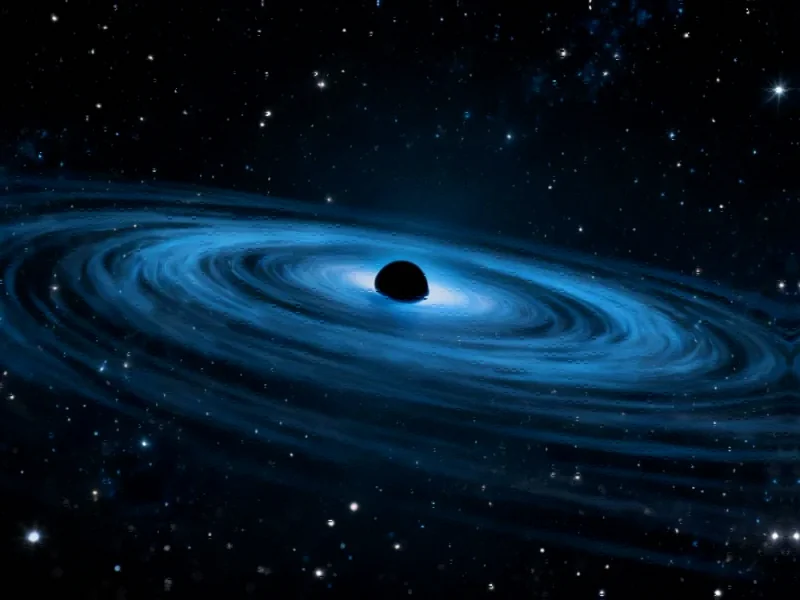TITLE: Interstellar Visitor 3I/ATLAS Defies Convention with Solar-Facing Anomaly
Unprecedented Solar Interaction Observed in Interstellar Object
Astronomers worldwide are captivated by the peculiar behavior of interstellar object 3I/ATLAS as it traverses our solar system. What was initially presumed to be a standard icy comet has revealed increasingly complex characteristics that challenge conventional understanding of celestial mechanics. The object’s latest surprise comes in the form of a mysterious solar-facing extension that contradicts typical cometary behavior.
The Anti-Tail Phenomenon: Defying Solar Expectations
Observations from the Keck II telescope in Hawaii, conducted when the object was approximately 2.5 astronomical units from Earth, revealed what Harvard astronomer Avi Loeb describes as “evidence for a puzzling anti-tail extension in the direction of the Sun.” This finding, documented in a pre-print paper awaiting peer review, confirms previously detected cyanide and nickel outgassing occurring both toward and away from the Sun.
“Most remarkably,” Loeb notes, “the white light image of 3I/ATLAS does not show evidence for a familiar cometary tail, as expected for dust which scatters sunlight and is pushed away from the Sun by solar radiation pressure.” This absence of conventional tail structure while displaying solar-facing emissions represents a significant anomaly in celestial observation.
Scientific Explanations and Competing Theories
Researchers have proposed several potential explanations for this unusual phenomenon. One theory suggests an optical illusion caused by Earth’s relative position in space, where a comet’s wide tail fans out to create the appearance of extensions in multiple directions. Another possibility involves larger dust grains resisting solar wind pressure on the sun-facing side, potentially combined with rapid rotation of the comet’s core.
University of California, Los Angeles planetary astronomer Michael Busch elaborated on the mechanics: “With a rotating comet nucleus… ejecta from a spot can come off with heliocentric velocity that puts it either in front of or behind the nucleus. Small dust and ejected gas gets pushed out by radiation pressure and solar wind, but larger pieces of ejecta spread out along the orbit; both in front of and behind the nucleus.”
These unprecedented observations are driving new discussions about the fundamental nature of interstellar objects and their interaction with solar systems.
Technological Implications and Research Significance
The ongoing study of 3I/ATLAS represents more than astronomical curiosity—it offers valuable insights for advanced computational modeling and space observation technologies. The object’s behavior challenges existing predictive models and may inform future artificial intelligence systems designed for celestial pattern recognition.
As technological partnerships continue to evolve across industries, the methodologies developed for analyzing such cosmic anomalies could have broader applications in data analysis and pattern recognition systems.
Future Observation Opportunities and Mission Coordination
Fortunately for researchers, 3I/ATLAS will provide additional observation windows before departing our solar system. The object is scheduled for a close approach with Jupiter next month, offering NASA’s Juno spacecraft and the European Space Agency’s Juice mission brief but valuable observation opportunities.
These upcoming encounters may provide crucial data to resolve the current mysteries surrounding the object’s composition and behavior. The coordination between multiple space agencies and observation platforms demonstrates the growing sophistication of international scientific collaboration in addressing complex astronomical phenomena.
Broader Context and Industry Relevance
The study of interstellar objects like 3I/ATLAS intersects with numerous technology sectors and research domains. The computational requirements for tracking and analyzing such objects drive innovation in data processing and sensor technologies, while the materials science implications of studying extraterrestrial composition inform advanced materials research.
As Loeb ranks the object at four out of ten on his scale for potential extraterrestrial technology indicators, the scientific community continues to monitor how these related innovations in observation technology might reveal further surprises from the interstellar visitor.
The ongoing investigation into 3I/ATLAS represents a fascinating convergence of astronomical observation, computational analysis, and technological advancement, offering valuable insights that extend beyond pure astronomy into numerous industrial and research applications. As monitoring continues, the scientific community awaits what additional secrets this mysterious interstellar traveler might reveal about the universe beyond our solar system.
This article aggregates information from publicly available sources. All trademarks and copyrights belong to their respective owners.
Note: Featured image is for illustrative purposes only and does not represent any specific product, service, or entity mentioned in this article.



